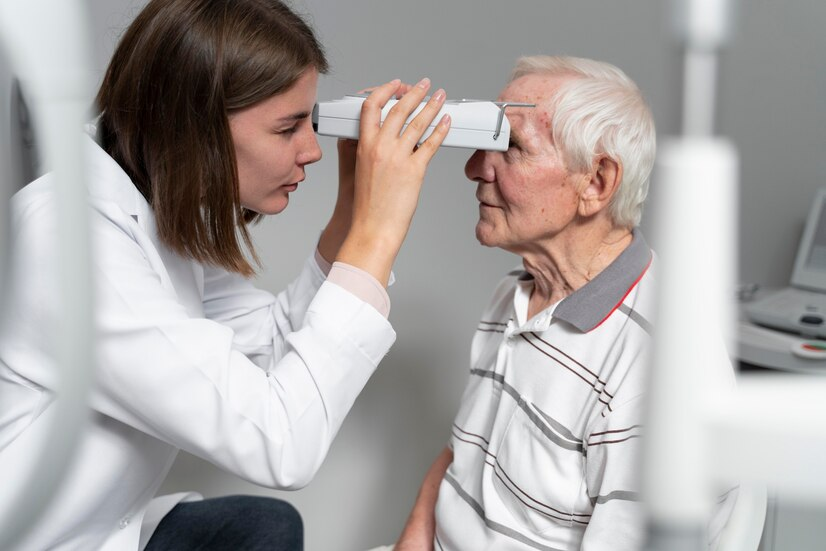We provide you the best Ophthalmology treatment in Chennai

At Smart Vision Hospital, we specialize in the diagnosis and treatment of diabetic retinopathy, a condition that affects the blood vessels in the retina due to high blood sugar levels. The retina, a crucial part of your eye, senses light and sends visual information to your brain. When the blood vessels in the retina are damaged by diabetes, it can lead to significant vision problems.
Understanding Diabetic Retinopathy
Diabetic retinopathy occurs when prolonged high blood sugar causes damage to the blood vessels in the retina. In the early stages, you might not notice any changes in your vision. However, as the condition progresses, the blood vessel walls can weaken and leak fluid, causing swelling and vision distortion. In advanced stages, abnormal blood vessels can form and create scar tissue, which may pull the retina away from the back of the eye, potentially leading to severe vision loss or blindness.
Common Symptoms
Although early diabetic retinopathy may not show noticeable symptoms, it is important to be aware of signs that can indicate progression of the disease:
- Blurred vision
- Fluctuating vision
- Dark or empty areas in your vision
- Difficulty with color perception
- Vision loss
Our Approach to Care
At Smart Vision Hospital, we provide comprehensive care for diabetic retinopathy, emphasizing early detection and effective treatment to preserve your vision. Our patient-centric approach ensures that you receive personalized care tailored to your specific condition and needs.
Advanced Diagnostic Tools
Our state-of-the-art facility is equipped with advanced diagnostic tools to accurately assess and monitor diabetic retinopathy:
- Fluorescein Angiography (FFA): A test that uses a special dye to visualize the blood vessels in your retina.
- Optical Coherence Tomography (OCT): A non-invasive imaging test that provides detailed images of the retina’s layers.
- Fundus Photography: High-resolution photographs of the retina to document and monitor changes over time.
Treatment Options
The treatment for diabetic retinopathy at Smart Vision Hospital varies depending on the severity of the condition. Our treatment options include:
- Panretinal Photocoagulation: A laser treatment that reduces the risk of severe vision loss by shrinking abnormal blood vessels.
- Intravitreal Injections: Medications injected directly into the eye to reduce inflammation, inhibit the growth of abnormal blood vessels, and improve vision.
- Vitrectomy: In advanced cases, surgical removal of the vitreous gel may be necessary to repair retinal detachment or remove scar tissue.
FAQs on Diabetic Retinopathy
The longer a person has diabetes, the higher are the chances DR occurring. More periods of uncontrolled state of diabetes can result in DR. The type of diabetes also matters.
Mostly none initially. In many cases, people having diabetes for more than 5 years there could be blurred vision or floaters, due to fluid accumulation at the macula or due to cataract.
DR can be divided into non proliferative stage and a proliferative stage with or without macular edema
If the central part of the eye that is the macula is seriously involved then we have blindness resulting
Diabetic retinopathy is mainly a disease involving the small blood vessels and the resultant damage it causes to the retinal neurons which is called retinal neuropathy
This is a non proliferative stage in which the doctor can see microaneurysms ,small dot and blot haemorrhages as well as soft and hard exudates
After dilating the eyes with mydriatic drops for one hour through an examination known as ocular fundus examination
It can be if diagnosed in early stages and steps are taken to treat it
Vision impairment is principally due to macular affliction and media haze which can be caused by vitreous haemorrhage as well as by complicated cataract
Increased intraocular pressure can result in eye pain. It may co exist with Diabetic retinopathy or can be caused by complications resulting from it
It can cause blurred vision in one eye if there is more serious involvement as compared to the other eye. Investigations to rule out atheromatous involvement in the carotid as well as vertebrobasilar systems need to be done
Tractional retinal detachment can occur if the vitreous haemorrhage causes fibrous bands to develop between the vitreous and retina
Prior investigation such as fundus fluorescence in angiography(FFA) or optical coherence tomography(OCT).DR can also be treated by intravitreal injections ,laser and surgery depending on the condition
Yes with medicines, good control of blood sugar, intravitreal injections and by laser if done appropriately and early
Poor control of diabetes can result in infections in any part of the body and the eye is no exception. Intra ocular surgery is best avoided in such cases
This is the stage before the occurrence of new blood vessels in the retina which signifies local or globalised ischemia of the retina
It affects the wall of the microvasculature of the eye resulting in out pouching called as microaneurysms, which can burst resulting in leakages inflammation and ischemia.
Ischemia results in damage to the retinal ganglion cells and retinal neurons in the optic nerve and its head
Inflammatory and non-inflammatory
Many patients over the age of 50 with or without diabetes can have eye floaters.
Fluid collection and cystic formation can result in macular swelling which is otherwise called macular edema
Statistically after seeing a large population of diabetics it has been found that around 40% of them have raised intraocular pressure. So there is a higher chance that diabetes may cause glaucoma.
Yes it could signify onset of vitreous haemorrhage
Patients of uncontrolled may develop DR changes at an accelerated pace and vitreous hemorrhage can lead to sudden vision loss. If not managed adequately can lead to traditional retinal detachment

